How the LA Art Show Has Blossomed Into a Pacific Rim Powerhouse
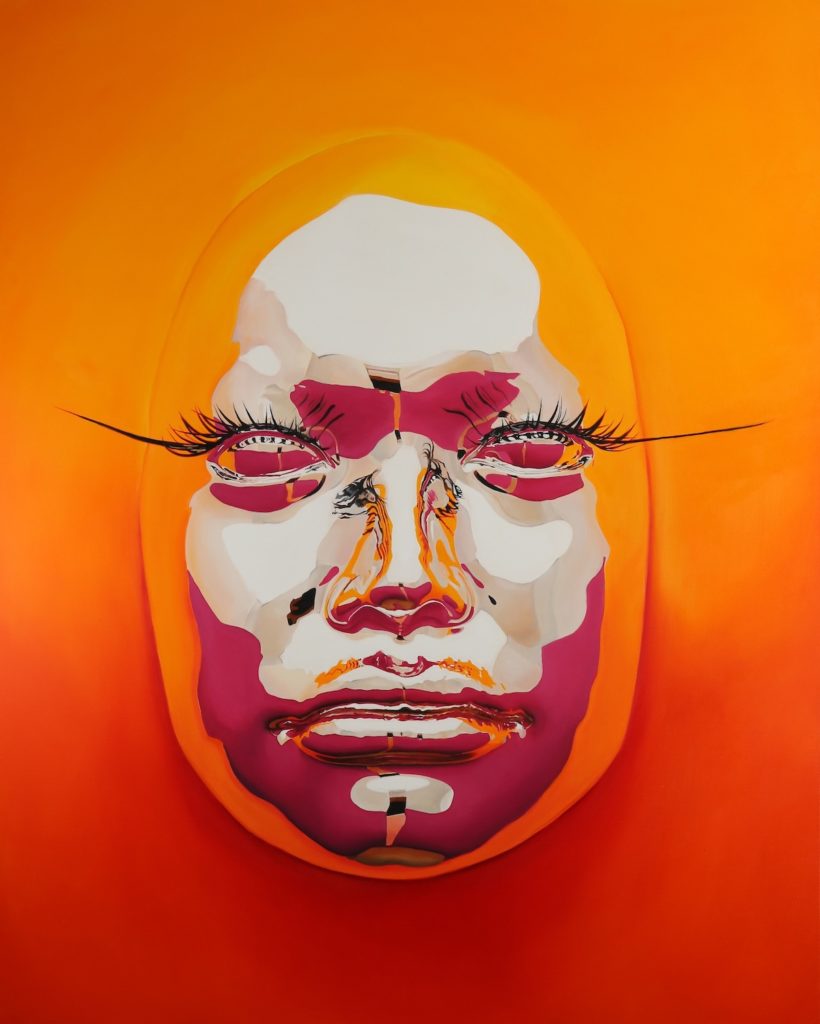

Artnet Gallery Network

Despite boasting one of the country’s most vibrant art scenes, Los Angeles doesn’t yet have an art fair on the same level—in terms of visitor numbers and industry sway—as those of other major cities, such as Art Basel Miami, Expo Chicago, and the Armory Show and Frieze in New York. For his part, Kim Martindale, the longtime producer of the LA Art Show, is trying to change that.
Martindale co-produced his first art fair, the Santa Fe Antique American Indian Art Show, at age 16, and has since gone on to produce a number of successful—albeit smaller, more specialized—fairs throughout the American West.
When he first launched LA Art Show 23 years ago, the fair had less than 15 participating galleries, each of which focused on early American art or old master paintings from Europe. This year’s fair, which kicks off at the Los Angeles Convention Center on January 10, features 100 galleries from 18 countries and expects to draw over 70,000 visitors. Its scope has grown considerably as well, bringing together galleries and museums who specialize in ancient, modern, and contemporary art from all over the world.
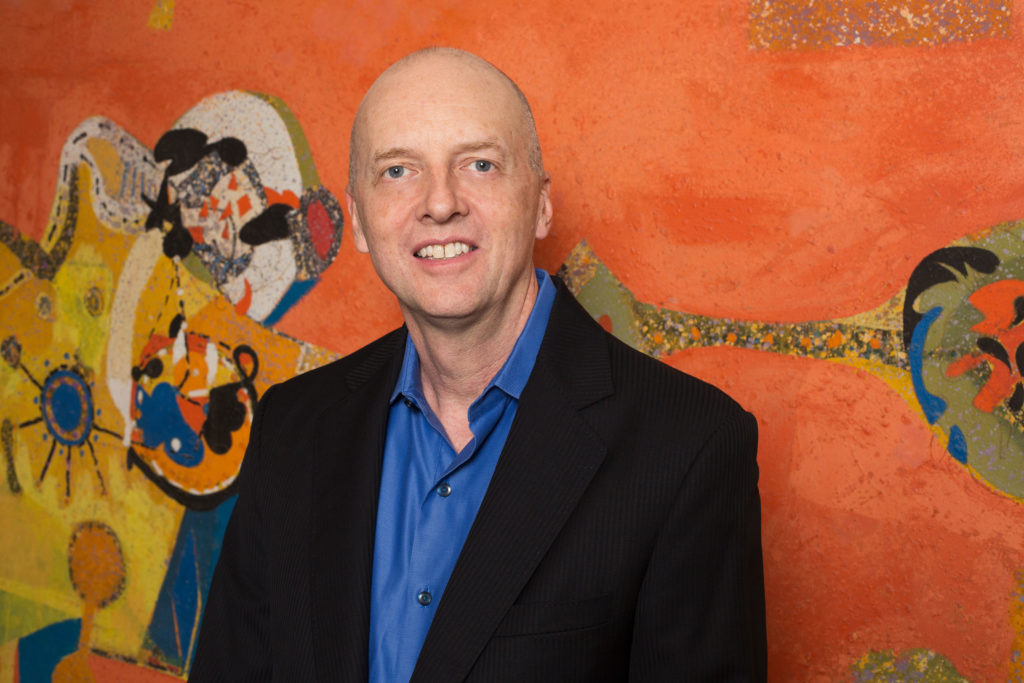
Kim Martindale. Courtesy of the LA Art Show.
artnet spoke with Martindale to discuss visitors can expect from the 24th edition of the LA Art Show.
What can we expect from this year’s fair, and how might it differ from those of years past?
The thing that’s the most exciting this year is the extension and continuation of DiverseArtLA, which focuses on the immense diversity of the art world and its distinct, interwoven influence in Los Angeles.
We made several major changes last year, the most notable of which was incorporating museums into the fair for the first time. This year we’re moving forward with even more non-profit and museum engagement, extending beyond Southern California to bring in programming from the MUSA Museum of the Arts Guadalajara. Our 70,000 attendees will be able to find over 100 galleries from around the world at the LA Art Show, with a whole new group coming on board this year, such as Konig Galerie, Casterline Goodman, Galerie Bhak, and the McCloughlin Gallery.
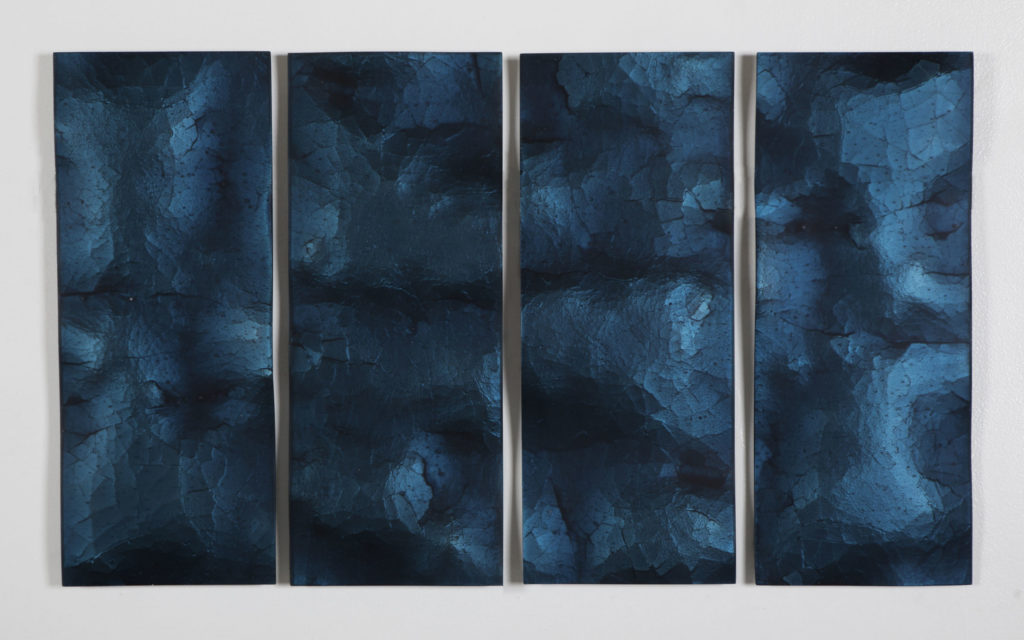
Matthew Day Perez, Crush: Big Blue (2017).
Courtesy of the LA Art Show.
The breakdown of the LA Art Show is more specialized than many other fairs. Can you explain the different sectors (Core, Modern & Contemporary, Jewel, Roots, Littletopia, and DIVERSEartLA), and how the participant galleries for each were chosen?
What’s unique about the LA Art Show—even though it’s more focused on modern and contemporary than it was five years ago, when it was much more of an encyclopedic fair—is just how expansive it is. Many fairs focus on one thing and their curatorial statement is very defined. My feeling is that the LA Art Show is reflective of Los Angeles and its incredible diversity. That’s why we introduced DIVERSEartLA. It’s also reflected in the many different galleries we have coming here as well. The fair is broken down into the sections so as to give people an easier way of going through the fair, and to help them to understand the diversity of what’s included.
DIVERSEartLA is going to cover 60,000 square feet of the show and be devoted to performance art, installations, exhibitions, and programs curated by major museums and arts organizations such as the Los Angeles County Museum of Art, Museum of Latin American Art, the Autry Museum of the American West, and the MUSA Museum of the Arts Guadalajara. For the first time ever, we’ll be working with the UCLA Chicano Studies Research Center and UCLA Art | Sci Center on programming as well. Launch LA and the California African American Museum have partnered to create a survey of 10 local artists of color called “Eyes Forward,” while LA Art Association’s “Ping Pong” exhibition is also returning this year.
In 2017 we created the ROOTS section for exhibitors that focus on historical works such as 18th Century European, Contemporary Realism, California Plein Air, and Hudson River School paintings. It, too, will be returning this year.
This will be the fifth year we’re hosting LITTLETOPIA, devoted to promoting some of the newest and freshest voices in contemporary art. The fair-within-the-fair is curated by Red Truck Gallery, and has showcased some of the fastest rising low-brow and pop art galleries, curators, and artists in the world. LITTLETOPIA has an awards ceremony each year, and for 2018, Margaret Keane will be honored with a Lifetime Achievement Award, presented by Mab Graves.
Finally, CORE / Modern & Contemporary feature contemporary art exhibitors from Los Angeles and across the globe.
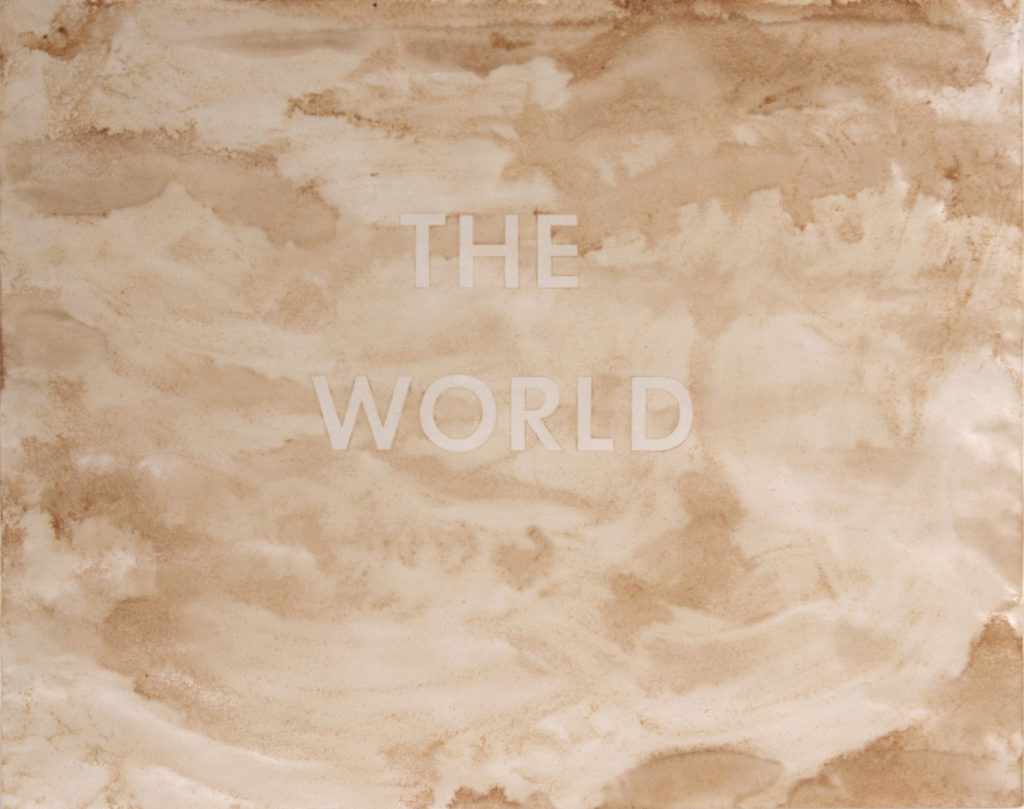
Ed Ruscha, The World (1977). Courtesy Casterline Goodman Gallery.
This year, for the first time, the fair will also present a sector specifically dedicated to design, called Design LA Art. What was the impetus for bringing design into the fold?
We wanted to show art in other formats, and design goes hand in hand with fine art, especially here in LA. Many homes that have art on the wall also have designer furniture and other objects along those lines. We wanted the fair to be reflective of how people collect and live with art in Los Angeles.
The unique thing about how we’re presenting the booths in Design LA Art is that each of them are 360 degrees. They’re circular in format because many of the pieces exhibited are sculptural, and need to be seen from all angles. The goal was to create an experience that’s different from the other parts of the fair where it’s much more linear and art is displayed on walls.
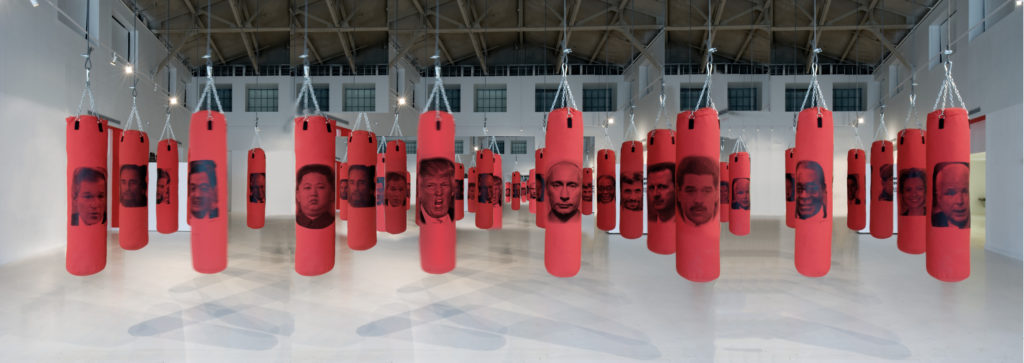
Antuan Rodriguez. Left or Right (2017). Courtesy of the LA Art Show.
What, in your mind, makes the Los Angeles art world special and distinct from those in other cities, especially New York?
I think there are several things we have happening: we have many new galleries and museums opening up here, and we have a lot of artists moving here. Those are some of the underlying things creating excitement at the moment. Los Angeles is the largest city on the Pacific Rim, and that’s reflected in the city’s art scene, though we have galleries coming in from all over Europe as well. Our fair is West Coast- and Pacific Rim-based, so much of the programming from both our galleries and museums reflect that.
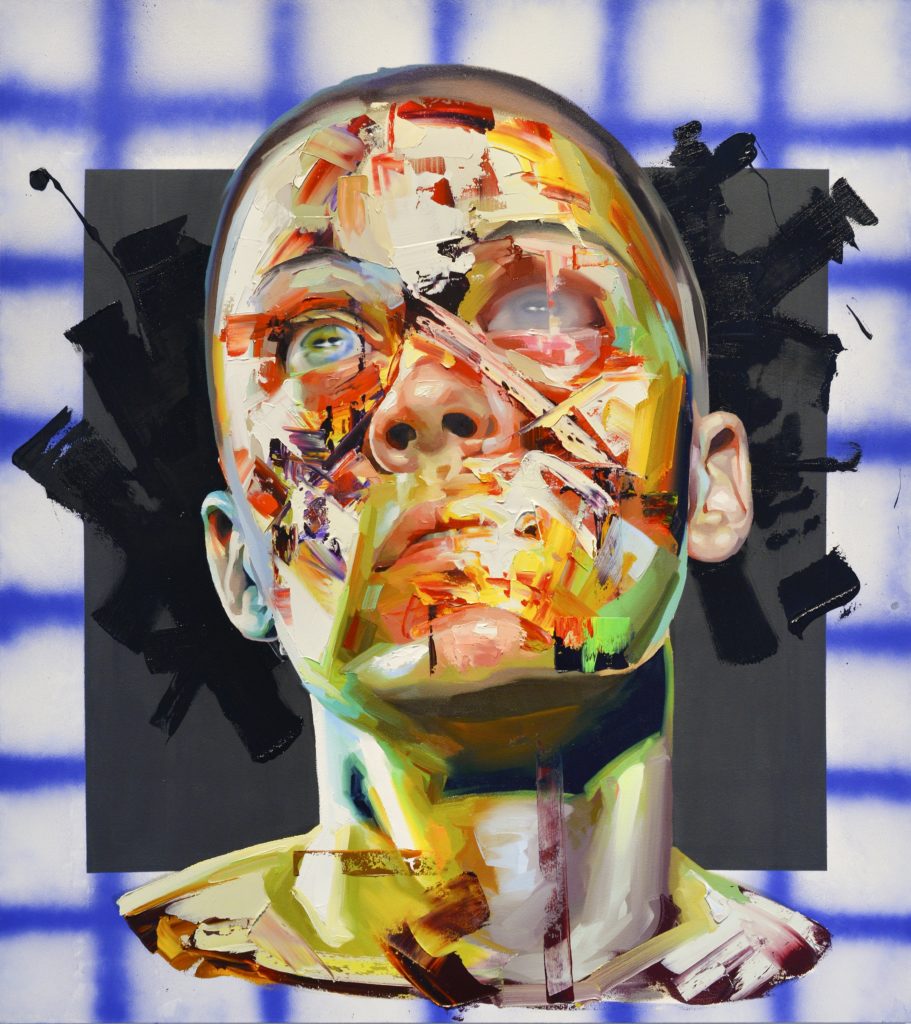
Justin Bower, Son Stroke (2017). Courtesy the LA Art Show.
How has the city’s art scene changed in the years you’ve been in LA?
The art scene in LA has changed a great deal, and the LA Art Show has been both a mirror of that change and one of the forces behind it. When we started 23 years ago, the city was focused on more historic and traditional work. While there were collectors, they weren’t serious, at least not to the degree that they are today. Now there is a groundswell of people here who want to build collections that are truly original. Those collections vary by budget, but we still have some of the biggest collectors in the world.
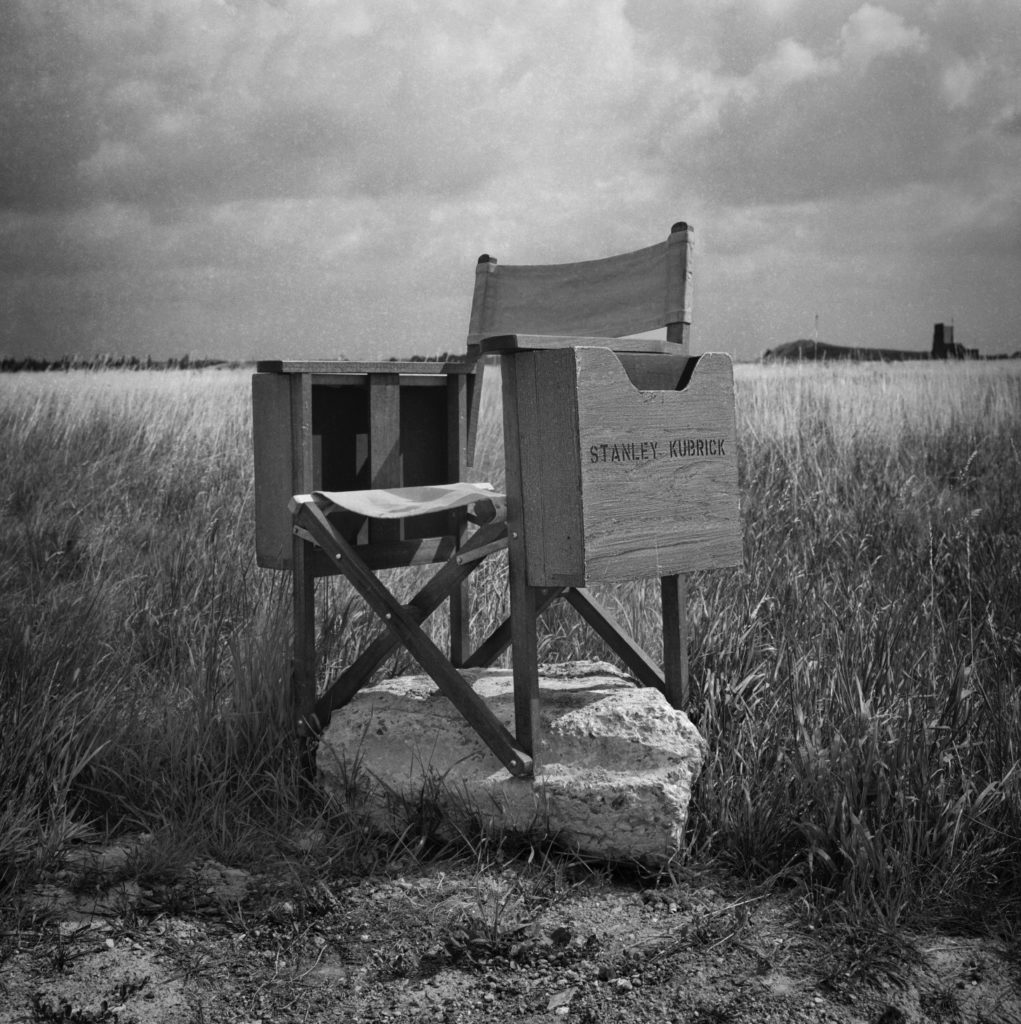
Photography from Matthew Modine’s book Full Metal Jacket Dairies (2005). Courtesy of the LA Art Show.
LA has long been one of the country’s biggest and liveliest art hubs. However, the city has yet develop a major art fair that can compete with those of New York, Chicago, or Miami. Why do you think that is? Is it your hope that the LA Art Show emerges as that kind of mega-fair, or do you have different aims in mind?
Completely. That has been the goal for 23 years. As LA’s art scene has grown, the size and scope of the fair have grown with it. I think LA is finally ready for a fair at that level.
Actually, in terms of attendees and square footage, the LA Art Show is already at that level. The next step is bringing in even more galleries from around the world.
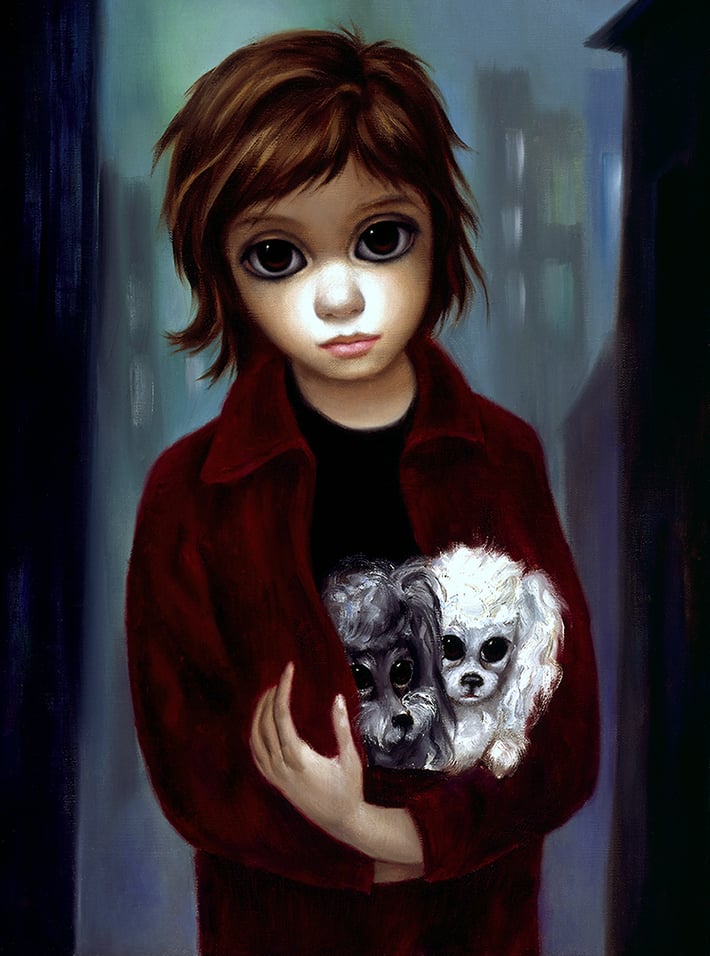
Margaret Keane, Pocket Poodles. Courtesy of the LA Art Show.
Your personal history of producing art fairs is particularly rich and varied. How has your path influenced the work you’re doing now?
My path is really about art. It always has been. Dating back to when I was three years old and referring to my room as the “Kimrarium Museum.” Or to when I started the first ever antique American Indian show in Santa Fe when I was 16. My path has always been about art, whether it be tribal or ethnographic, modern or contemporary. The shows that I do are about the whole field of art. That’s reflective of what’s in my personal collection as well.
The LA Art Show is on view at the Los Angeles Convention Center from January 10 – 14, 2018.